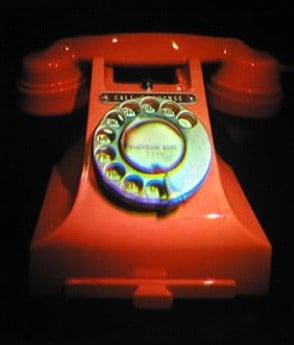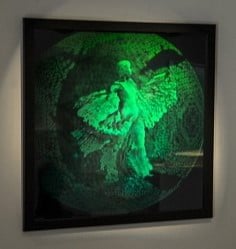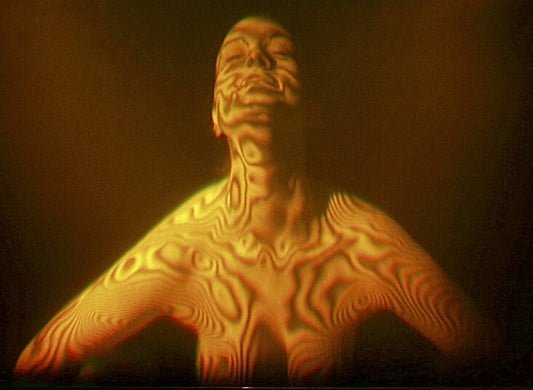Uncategorized
Types Of Holograms Used in Identity Cards
lanning ahead, while holography without a doubt faces difficulties as ID innovation and related criminal conduct keep on advancing, on the off chance that it stays zeroed in on its job as a powerful, adaptable and dependable enemy of forging measure, then, at that point its situation among governments and those answerable for law requirement will be guaranteed. Types Of Holograms Used in IDs
It will keep on having a significant impact in moving fake identity card archives to the following phase of improvement, guaranteeing quality and checking the exchange counterfeit IDs while those records not showing security 3D images are seized and annihilated.
Types of Holograms
There are two main types of holograms: reflection holograms and transmission holograms. However, there are several different types of what are called “hybrid holograms.” In this article, we’re going to talk about the many different types of holograms.
Before we move on to the finer details of the hybrid holograms, let’s first have a look at the common types.
1. Reflection Holograms

A spot of white incandescent light is used to illuminate reflection holograms. This light is placed at a specific distance and angle. To be able to see a reflection hologram, the viewer must stand at the side of this light.
The reflection hologram is a truly three-dimensional representation of the object. This 3D image of the object is seen near the surface. Galleries generally display reflection holograms. The image consists of the white incandescent light being reflected by the hologram.
2. Transmission Holograms
In a transmission hologram, one must use the same laser light to view the object as was use to create it in the first place. You can cut transmission holograms into different pieces and yet each of them will reproduce the original image in its entirety.
Laser light is transmit from behind the hologram whereas the image is transmit to the viewer’s side. Transmission holograms produce very sharp, clear, and deep images. For example, it’s possible to record an entire page from a book or a room full of people in a transmission hologram.
Different entry angles (through holes made into the hologram) would still reproduce the whole scene but from different vantage points. It’s possible to effectively project the image out of a transmission hologram too. For this, we can use an undiverge laser that’s direct backward from the direction of the reference beam.
A real image will be produce on a screen that’s place at the object’s original position and distance. Reflection and transmission hologram techniques can be use to generate different types of holograms. Some are hybrid techniques whereas others are completely different.
3. Computer-generated holograms (CGH)

Computer-generated holograms are fairly new. Essentially, the thing with holography is that if you know two of the three constituents, you can calculate the third. The three constituents are, namely, the light source, the image, and the hologram itself. Currently, there is no technology or scanner to verify hologram authenticity.
Computers can be use to calculate the third constituent in many cases to produce computer-generated holograms. Let’s assume we’re going to use a parallel beam of light of a specific wavelength (which we know). Also, assume that we’re going to use a double-slit system to create a simple hologram. Types Of Holograms Used in IDs
Now, we can effectively calculate the diffraction pattern using a computer.
If we know the diffraction pattern and have data on the double-slit system then we can calculate the light’s wavelength. Consequently, it’s possible to imagine any pattern. The next step is to decide on the wavelength of the light to be use for observation. Now, a computer can be use to design this hologram.
4. Integral Holograms
Integral holograms are create from a series of transparencies or pictures of the original object. The final result of the integral holography process is a stereoscopic view of the image.
The process is essentially about recording photographs or transparencies on holographic plate strips (called holoplates). This is done by “scanning” the media with a camera to record multiple separate views.
All these discrete views are then display on a laser-illuminate LCD screen. This light is now use as the object beam that records the hologram on one of the strips. The composite view is create once all views are record on different strips. In effect, viewing this finished hologram will be different for both, the left and the right eyes – thus creating the stereoscopic feel.
5. Holographic interferometry
The process of creating a hologram is essentially one of recording light information. It depends on the interference pattern between the light waves.
Consequently, the actual holographic image is the difference between the overlapping waves.

Holographic interferometry is a set of techniques – such as the double laser pulse – that aim to detect very small variations in the form. Holographic interferometry has a wide variety of industrial applications. In holographic interferometry, one can potentially detect even microscopic changes. Types Of Holograms Used in IDs
6. Multichannel Holograms
You can detect the differences in the viewing light in the case of a multichannel hologram. The same hologram can be view differently base on the angle of the viewing light. Multichannel holograms have a promising future especially in computer memory and even storage.
7. Embossed Holograms
A 2D interference pattern is steadily press onto a thin plastic foil to create an embossed hologram. The process of creating an embossed hologram is actually a group of several holographic processes. Embosse holograms are widely use for authentication purposes.
These is usually mass produce as holographic stickers to put on products for security purposes. Credit cards, passports, ID cards, banknotes, and so on – a variety of media use holograms to ensure security. The first step to creating an embossed hologram is to record the original image on a photosensitive material. This then needs to be develope. It’s further treat with a layer of nickel. Types Of Holograms Used in IDs
The nickel deposit is then peel off, which gives the hologram a metallic shine or “shim”. Multiple shims can be produce within the same hologram. This shim is then place on a roller that embosses the hologram onto composite material with the help of high pressure and temperature.
8. Color vs Monochromatic Holograms
Holograms can also be differentiate as full-color or monochromatic. The science of creating holograms kicked off with the usage of monochromatic light. This resulted in the holograms themselves being monochromatic.
Color could still be see in those, partly thanks to the color of the film (silver base with green, yellow, or red highlights). By 1994, however, experiments successfully yielded full-color holograms.
Conclusion
The innovation in holographic technology might have been around for quite a long time, yet 3D images for secure validation are the steadfast for identity cards. Also, the utilization of all around planned and appropriately conveyed verification arrangements, as upheld by the ISO 12931 norm, empowers those with ID assurance obligations to check the credibility of a real item, separating it from fake ids.
Indeed, even those that convey a “phony” verification highlight can be recognize from the veritable thing if that thing does a painstakingly thought validation arrangement. Furthermore, apparently the benefits holography offers will proceed even as advanced and versatile ID advances acquire expanding footing.

